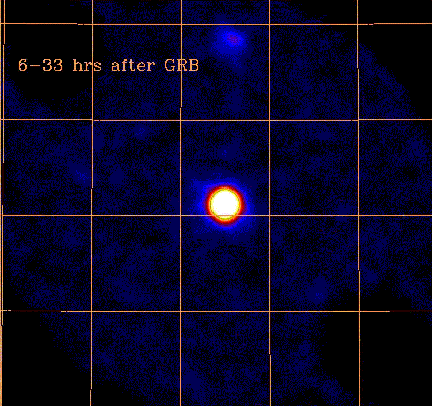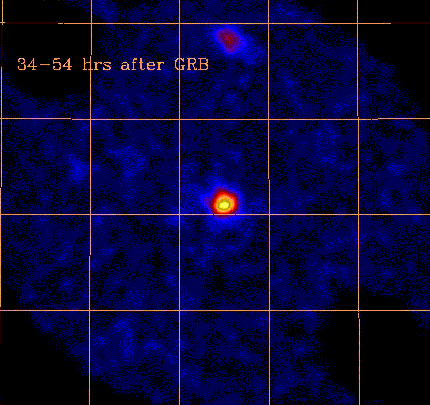

The burst was detected on Jan.23, at 9:47 UT, with the Gamma-Ray burst Monitor and the Wide Field Cameras on board of BeppoSAX. The explosion site was localized with a position accuracy of 2 arminutes with WFC. The BeppoSAX GRB team, led by L. Piro (Mission Scientist, Istituto Astrofisica Spaziale, Rome), E. Costa (Principal Investigator of GRB program), F. Frontera (Responsible of GRBM instrument) and J.Heise (responsible of WFC instrument), distributed the coordinates of the event to a worldwide network of more than 200 observers. In parallel, the observing program of the BeppoSAX satellite was immediately reprogrammed to slew the 1.5 tons satellite, in order to point with the more sensitive X-ray telescope the location of the Gamma-Ray Burst. In a mere 6 hours after the Gamma-ray burst, the X-ray telescopes (Narrow Field Instruments) started to acquire the image of the field, finding the brightest "afterglow" (i.e. the fading remnant of the explosion) ever observed by BeppoSAX.


The BeppoSAX positions allowed to pinpoint, out from a very large field of view, the contemporaneous optical counterpart with the ROTSE instrument at Los Alamos (NM), that was slewed to the coarse "almost instantaneous" GRB position provided by the BATSE GRB monitor on the Compton Gamma-RAY Observatory. Optical spectroscopy performed by Keck (Kelson et al. 1999, IAUC 7096) and NOT (Hjort et al. 1999, GCN 219) allowed to determine the distance of the event at a redshift of z=1.6, that corresponds to about 9 billion light years. If the emission is isotropic, then the energy produced in the explosion is about 2 times 1054 ergs. In other words, in a few seconds this gamma ray burst produced 100,000 more energy than that produced by the Sun in its entire - billion of years - lifetime.
The research of this particular WFC-detected burst is led by Dr. John Heise at SRON.
Here are some pointers to additional information: